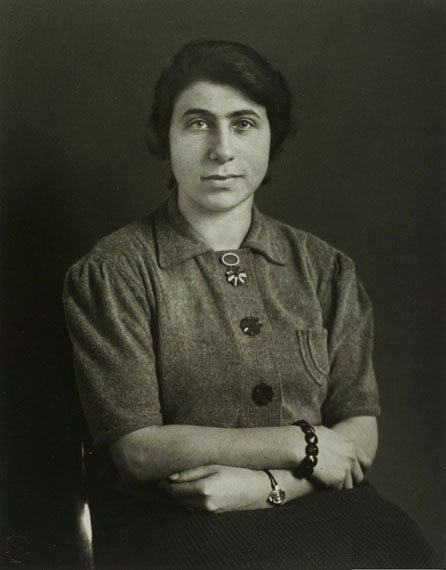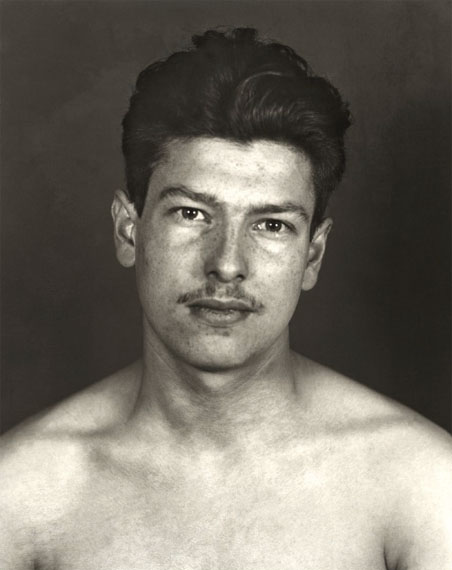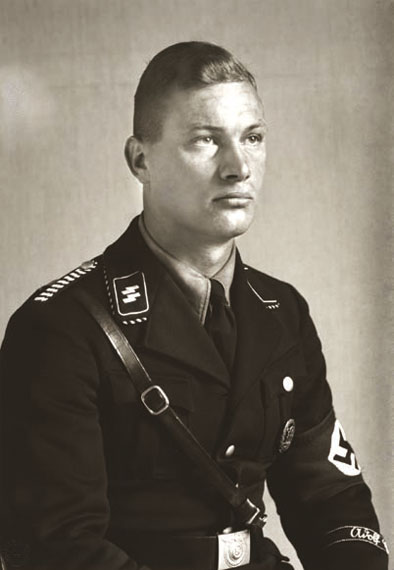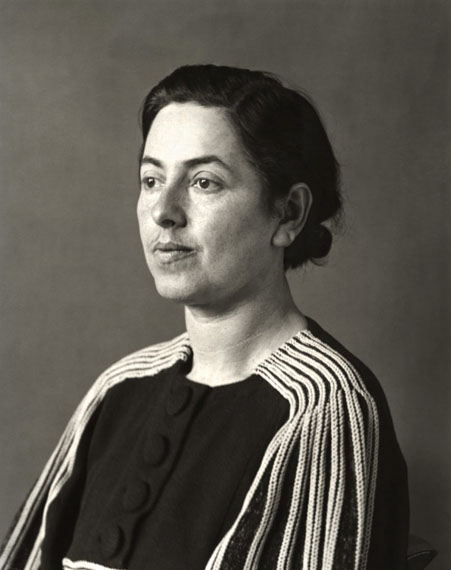
© Die Photographische Sammlung/SK Stiftung Kultur - August Sander Archiv, Cologne;
VG Bild-Kunst, Bonn; ADAGP, Paris, 2018.
Courtesy Galerie Julian Sander, Cologne; Hauser & Wirth, New York.
August Sander »
Persécutés / Persecuteurs, des Hommes du XXe siècle
Persecuted / Persecutors People of the 20th Century
Exhibition: 8 Mar – 15 Nov 2018

Mémorial de la Shoah
17 rue Geoffroy-Lannier
75004 Paris
+33 (0)1-42 77 44 72
contact@memorialdelashoah.org
www.memorialdelashoah.org
Mon-Sun 10-18, Thu 10-22

© Die Photographische Sammlung/SK Stiftung Kultur - August Sander Archiv, Cologne;
VG Bild-Kunst, Bonn; ADAGP, Paris, 2018.
Courtesy Galerie Julian Sander, Cologne; Hauser & Wirth, New York.
“We can tell from a facial expression the work someone does or does not do, if they are happy or troubled, for life leaves its trail there unavoidably. A well-known poem says that every person’s story is written plainly on their face, although not everyone can read it.”* – August Sander
From March 8 to November 15, The Shoah Memorial is holding a major exhibition dedicated to a series of portraits taken during the 3rd Reich by one of German photography’s leading figures, August Sander (1876- 1964). Internationally recognized as one of the founding fathers of the documentary style, August Sander is the man behind many iconic 20th century photographs.
Towards the end of the First World War, while working from his studio in Cologne, August Sander began what would become his life’s work: a photographic portrait of German society under the Weimar Republic.
He called this endeavor “People of the 20th Century”. While his first publication was banned from sale in 1936 by the National Socialist government, in around 1938 Sander began to take numerous identity photographs for persecuted Jews. Later, during the Second World War, he photographed migrant workers. August Sander included these images, and some taken by his son Erich from the prison where he would die in 1944, in “People of the 20th Century”, along with portraits of national socialists taken before and during the war. Sander was unable to publish his monumental work during his lifetime, but his descendants still champion his vision to this day.
These photographs are exhibited here together for the first time, along with contact prints, letters and details about the lives of those photographed. They are portraits of dignified men and women, victims of an ideology, taking their rightful place as ”People of the 20th Century” in defiance of Nazi efforts to ostracize them.
The exhibition is organized with the assistance of the August Sander Stiftung and the NS-Documentation Center of the City of Cologne, the largest commemorative site for the victims of Nazism in Germany, founded in 1988.�

Gelatin silver print, produced by Gerhard Sander, 1990.
© Die Photographische Sammlung/SK Stiftung Kultur – August Sander Archiv, Cologne;
VG Bild-Kunst, Bonn; ADAGP, Paris, 2018.
Courtesy of Galerie Julian Sander, Cologne and Hauser & Wirth, New York.
AUGUST SANDER - BIOGRAPHY
Born in November of 1876, the son of a miner from Herdorf (Rhineland-Palatinate), August Sander began his career in photography at an early age. In 1910, married with four children, he moved to Cologne where he established his own studio and worked as a portrait photographer. During the 1920s, Sander frequented numerous artists, musicians, writers, architects and in particular the Cologne Progressives who helped shape the guiding principles of his work.
Alongside his commercial photography work, Sander began to cultivate a personal project, entitled “People of the 20th Century”. He photographed people from all different social and professional walks of life, in Cologne and throughout Germany. These included the artists and communist activists frequented by his son Erich, as well as farmers, craftsmen, civil servants, artists, members of the upper-class, industril magnates, laborers, the unemployed, revelers of the Cologne Carnival and disabled people.
His work features a mix of studio portraits, some of which were identity photographs, and images taken specifically for his project, thus blending the work of craftsman and artist in accordance with his own ideas and those of the Cologne Progressives.
In 1929, Sander published Antlitz der Zeit (Face of Our Time, with an introductory essay by Alfred Döblin), a collection of 60 portraits constituting a sociological inventory of German society in the 1920s.
The rise of Nazism brought hardship for Sander. Antlitz der Zeit was banned from publication and his photographic plates were destroyed. His eldest son, Erich Sander, was imprisoned in 1934 for his political beliefs and died ten years later, shortly before his release date. Erich left behind a series of photos that Sander included in his work under the title “Political prisoners”. In 1938-39, Sander took numerous identity photographs for Jews in Cologne, who were obliged to obtain new identity papers, stamped “J” for Jewish, or who wished to leave Germany, particularly in the wake of Kristallnacht. At the end of the war, Sander would add twelve of these portraits to his photographic corpus under the title “The Persecuted”.
In 1942, Sander moved some of his negatives and archives into the basement of his country house, effectively saving them from destruction. His Cologne studio was bombarded in 1944. Sander died in 1964, leaving behind more than 40 000 photos, a photographic chronicle and sociological inventory of his time. His direct, objective style and constant search for truth decisively influenced the history of photography, marking a rupture from the classical style of portraiture that camouflaged imperfections.�

Gelatin silver print, produced by Gerhard Sander, 1990.
© Die Photographische Sammlung/SK Stiftung Kultur – August Sander Archiv, Cologne;
VG Bild-Kunst, Bonn; ADAGP, Paris, 2018.
Courtesy of Galerie Julian Sander, Cologne and Hauser & Wirth, New York.